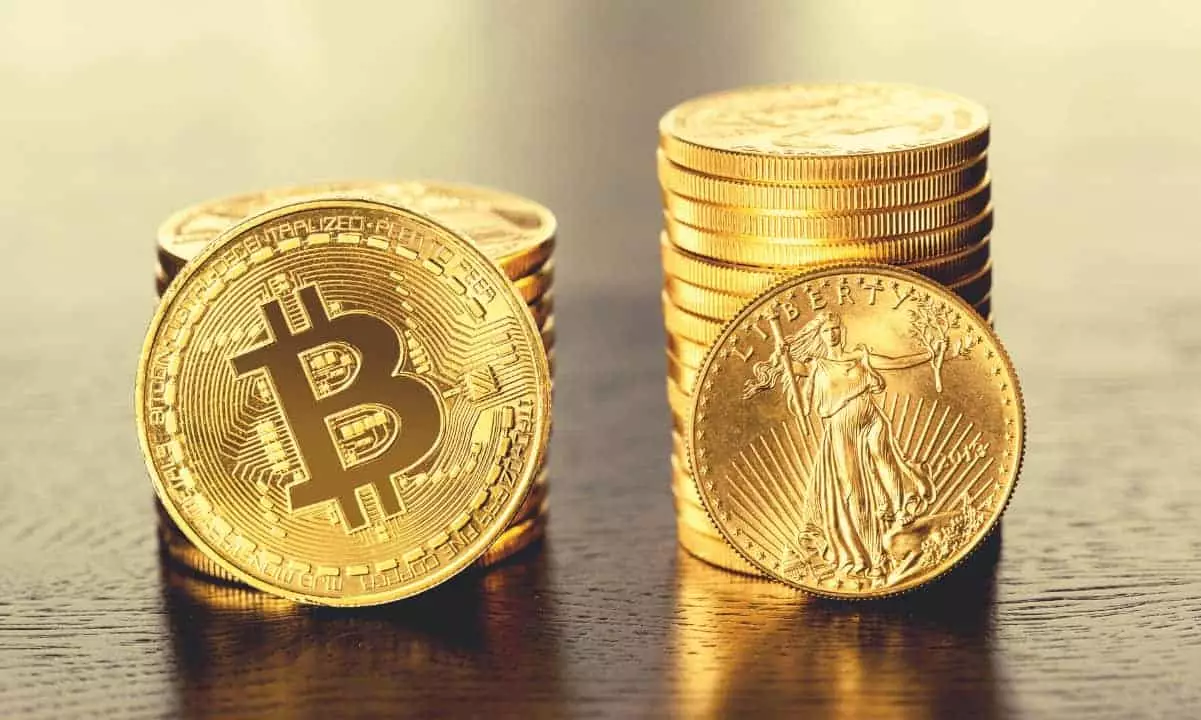Last week, the world witnessed a momentous milestone as gold surged past $3,000 for the first time in history. This remarkable achievement is not merely an isolated event; it’s a profound reflection of the evolving investor landscape. The ascent of gold suggests that individuals are beginning to question the stability of more traditional investments. While analysts have provided various factors contributing to this newfound appreciation for gold, the truth may be rooted in a broader philosophical awakening regarding the fragility of fiat currencies and the underpinnings of our financial system.
Geopolitical Tensions and Economic Anxiety
As geopolitical tensions rise around the globe, from ongoing conflicts to trade wars, it’s clear that instability is becoming the new norm. Investors, seeking safety in turbulent financial waters, are increasingly turning to gold, much like sailors seeking a lighthouse in a storm. With soaring inflation and an escalating U.S. deficit that has reached staggering proportions, it’s no wonder that the allure of gold has surged. The aforementioned $7 trillion annual expenditure of the American government has created a palpable sense of distrust in paper currency, prompting individuals to seek refuge in tangible assets. Gold shines, not just as a commodity, but as a bulwark against an encroaching economic apocalypse.
The Central Banks’ Role in Gold’s Surge
One of the most compelling aspects of gold’s recent rally is the participation of central banks, which have been stockpiling the metal at record levels. For three consecutive years, purchases have exceeded 1,000 tonnes, creating significant upward pressure on prices. The actions of these institutions suggest that they are also losing faith in fiat currencies and are opting for gold to secure financial stability. This institutional demand plays a pivotal role in the gold market, signaling to retail investors that there is a fundamentally sound rationale behind the skyrocketing price. When the guardians of monetary policy are all signaling the same message, one must pause and reconsider the tenable future of traditional currencies.
Physical gold: A Resurgence Amid Inflation Fears
In recent months, demand for physical gold has surged, with inventories in vaults jumping 115% in a mere two months. This uptick serves as a vivid illustration of mass panic; investors are gravitating toward the metal as fears of recession loom large. Supplies of gold are dwindling, and the relentless acquisition by not just central banks but also individual investors is indicative of a fundamental shift toward tangible assets. It’s a notable departure from a decade of increasingly abstract financial instruments that have left countless individuals vulnerable when crises struck.
The Dichotomy Between Gold and Bitcoin
The tension between gold and Bitcoin has never been more pronounced. While Bitcoin is often heralded as “digital gold,” its recent performance tells a different story. Notably, Bitcoin has not experienced the same meteoric rise as gold and is increasingly viewed as behaving more like a volatile tech stock than a stable asset. According to Peter Schiff, beloved critic of the cryptocurrency world, Bitcoin has fallen from being able to purchase 36.3 ounces of gold in 2021 to a mere 27.7 ounces today—a staggering 24% decline in purchasing power. As our financial system grapples with volatility, it seems that the digital currency may lack the historic robustness that gold has consistently exhibited over the millennia.
A Breaking Point for Traditional Financial Models
As the market grapples with these transformations, the notion of traditional asset correlation hangs in doubt. Historically, a robust U.S. dollar has kept gold prices suppressed, but the current landscape defies those established correlations. The precious metal’s newfound resilience in the face of a strong dollar hints at a potential breakdown of long-standing financial models. If both investors and central banks are adjusting their strategies to accommodate a world where traditional assets no longer provide security, we may be at the precipice of a financial revolution.
This convergence of data points—political instability, inflation, stockpiling by central banks, and the relative weakness of Bitcoin—paints a disconcerting picture of the future. The ascent of gold isn’t just a rare moment in financial history; it’s a clarion call for investors to reconsider the foundations of their financial strategies. The message is clear: traditional metrics of value are shifting, making gold an indispensable ally in navigating the tumultuous waters ahead.

